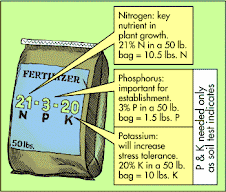 In our last two columns we have made a landscaping sketch and explored possible styles. Now we are ready to finish the plan for your yard. We will consider plantings suited for our area.
In our last two columns we have made a landscaping sketch and explored possible styles. Now we are ready to finish the plan for your yard. We will consider plantings suited for our area.Shrubs: A home is usually surrounded by foundation plantings arranged in beds. These visually anchor the house to the ground. Without them a house looks like it has bare ankles. Evergreen shrubs are the backbone of these beds. Yew, juniper, boxwood, holly, rhododendron and azaleas keep leaves or needles all winter in eastern Kentucky. Shrubs back lower growth. These shrubs are usually trimmed two to three feet tall. Taller, conical Arborvitae accent corners and insets of buildings.
Mixing in flowering deciduous shrubs will add color and fragrance in the warm months. My neighbor has a row of viburnum on the east side of their house and the delicious scent fills spring evenings. Lilac, forsythia, weigela, shrub crepe myrtle, spirea, mock orange, flowering quince, fire bush and shrub roses are practical, fast growing choices. Deciduous shrubs will fill in more quickly while you wait for slower growing evergreens.
 Trees: Many trees grow well in our area including white oaks, however oaks grow slowly. Plant these first and then add fast growing hardwoods like tulip poplar, silver and red maple, sweet gum and clump river birch. These all grow well in our dense clay. White pine, black pine and hemlock grow quickly and fluff out a yard beautifully, providing privacy and windbreak. Ornamental specimen trees like Cleveland pear, pink and white dogwood, eastern redbud, flowering crabapple and magnolia are the joy of spring and add such color to your yard. Crepe myrtle thrives in Kentucky and gives color in July and August after all the spring trees have bloomed.
Trees: Many trees grow well in our area including white oaks, however oaks grow slowly. Plant these first and then add fast growing hardwoods like tulip poplar, silver and red maple, sweet gum and clump river birch. These all grow well in our dense clay. White pine, black pine and hemlock grow quickly and fluff out a yard beautifully, providing privacy and windbreak. Ornamental specimen trees like Cleveland pear, pink and white dogwood, eastern redbud, flowering crabapple and magnolia are the joy of spring and add such color to your yard. Crepe myrtle thrives in Kentucky and gives color in July and August after all the spring trees have bloomed.Perennials: Plan space for blooming herbaceous perennials. These flowers will reward you for many years with cheerful blooms that will spread each year. Spring bulbs and creeping phlox are intensely welcomed in spring. Daylily, foxglove, roses, shasta daisies, garden phlox, black-eyed susans, cone flowers, columbine, clematis, bee balm, coreopsis, blanket flower, sweet william, iris, and lilies are all summer bloomers that will give years of delight. Most of these require a sunny location. Pick a color scheme and carry it through the yard. Plant perennials in drifts rather than one or two of an item. Many can be started from seed indoors in February. Try to plan for a few things blooming throughout the warm season. Gardeners love to trade perennial starts.
Annuals: Finally plan a little room for annuals. Maybe you will reserve annuals for pots and hanging baskets of petunias or impatiens, because they will perish in the winter. But their short lives are a riot of blooms requiring only faithful watering, sun and plant food. Place your annuals strategically, around doorways, mailboxes and other focal points in the front and back of your house. You will be surprised how much you enjoy them. Even our undomesticated bachelor relative used to dote on a fabulous wave petunia on his front porch, to the welcome of all.
Don’t forget your vegetable garden. If you feel timid about vegetables, plan for some patio tomatoes in pots, or some potted herbs outside your kitchen door. Once you experience the freshness of basil in a tossed salad or your own sun-ripened tomatoes, you will be hooked.
Include trees, shrubs, perennials and annuals in your landscape plan. Select what suits your taste. Remember, what is on paper can be changed. Complete your plan to scale as we discussed in Landscaping I. You now have a plan for spring!




No comments:
Post a Comment